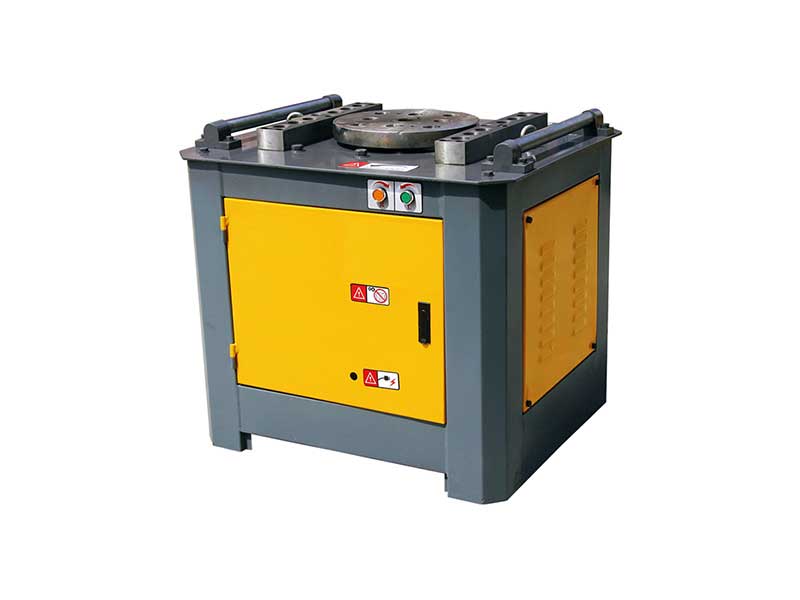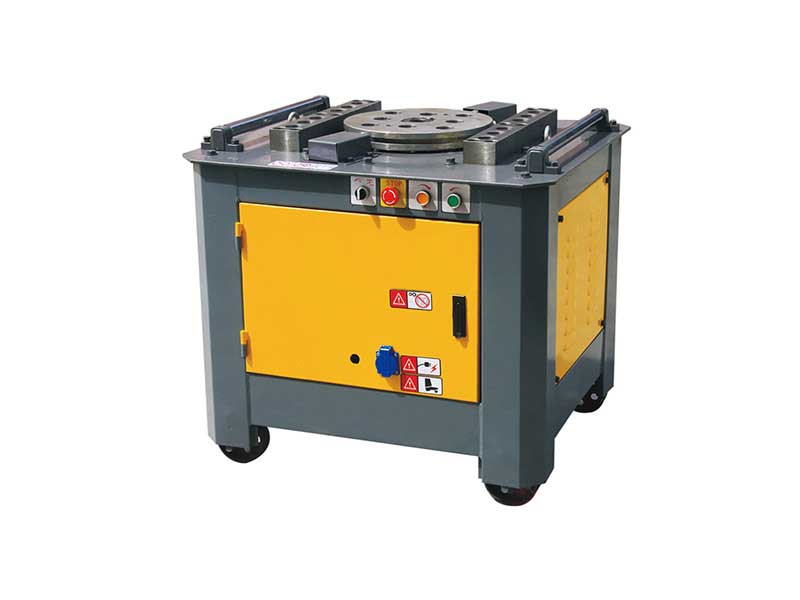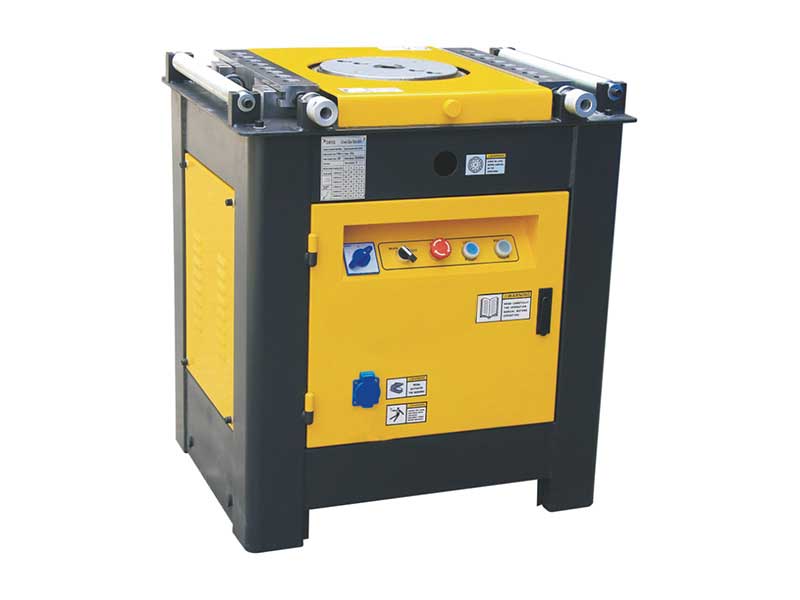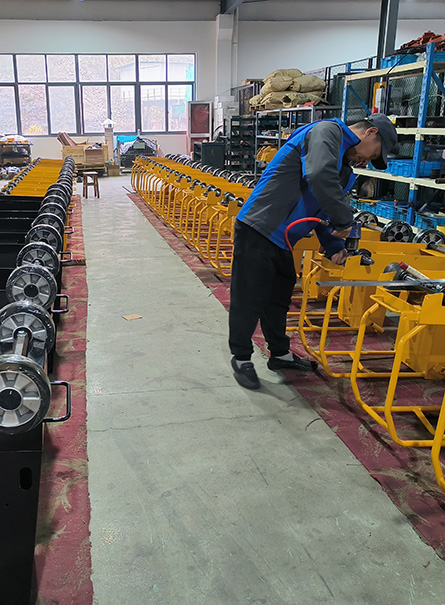HRB45D Rod Bending Machine
Bending Capacity
(ub≤450Mpa)6-45mm
(ub≤650Mpa)6-38mm
Working Speed
12r/min(High Speed)
8r/min(Low Speed)
Operating Type
Manual
HRB42D Rod Bending Machine
Bending Capacity
45#steel28mm c45 b≤650 Mpa:28mm
Working Speed
9r/min
Operating Type
Manual/Automatic
HRB40B Rod Bending Machine
Bending Capacity
(ub≤450Mpa)6-40mm
(ub≤650Mpa)6-32mm
Working Speed
10r/min(High Speed)
5r/min(Low Speed)
Operating Type
Manual/semi-Automatic
HRB35D Rod Bending Machine
Bending Capacity
45#steel28mm c45 b≤650 Mpa:28mm
Working Speed
12r/min
Operating Type
Manual/Automatic
What Is the Rod Bending Machine
A rod bending machine is a specialized piece of engineering equipment designed for processing steel bars. It boasts straightforward operation, high performance, and reliability. The machine's core components include transmission parts, framework, protective casings, and electrical components.
Its primary function is to bend steel bars, ranging from 0 to 180 degrees, making it indispensable in large-scale projects like roadways, bridges, and tunnels. Available in both automatic and manual variants, these machines cater to diverse construction needs.
What Are Key Components of the Rod Bending Machine?
- Visible parts to the user include:
- Moving bending roller: Pushes the bar in the desired bending direction.
- Center roller: Stationary roller around which the bar rotates, often lubricated to facilitate bending.
- Adjustable stopper.
- Pilot lamp: Indicates power supply to the machine.
- Main switch.
- Angle setter: For setting the bending angle, either dial type or with a circular disc having holes representing different angles.
- Operation button On/Off.
- Angle stoppers (Left & Right).
- Emergency stop button.
- Connector for foot switch or other activation mechanisms.
- Roller set.
- Foot Operated Switch: Activates the machine's operation.
How To Operate The Rod Bending Machine
The rod bending machine operates through a synergy of its parts: an electric motor, coupling, circular plate, worm gear drive, and an extended shaft. The motor's power is converted through a gearbox that moderates speed and amplifies torque, enabling the circular plate to bend the bar. Typically, it handles bar sizes between 6 mm and 16 mm. The machine also includes an auto-reverse and forward mechanism, powered by an electrical system comprising a contactor and limit switch, allowing for adjustments due to the spring back effect.
To operate the rod bending machine:
- Choose and set the correct rollers for the intended bars.
- Connect the machine to a power source.
- Place the bar between the center and bending rollers, adjusting its alignment with the stopper.
- Turn on the main switch; the pilot lamp should illuminate.
- Conduct a test bend to set the angle, making adjustments as needed.
For specific tasks like creating stirrups with bends at 90 and 135 degrees, preset the angles using the angle setter and angle stoppers. The operation button or foot switch is used to initiate bending. After bending, the moving roller returns to its starting position. In emergencies, use the emergency stop button or release the foot switch.
How To Maintain The Rod Bending Machine?
- Post-operation, maintenance is crucial:
- Monthly greasing of visible gears and pinions.
- Regular checking and replacement of worn carbon brushes.
- Ensuring no loose nuts and bolts before operation.
- Cleaning of metal dust, dirt, oil, and other residues.
- Periodic removal of side cover and tilting of the machine to eliminate metal dust, with compressed air cleaning recommended (wearing safety goggles).
Conclusion
To conclude, the rod bending machine, a vital tool in engineering steel bar processing, efficiently bends bars within the 6 mm to 16 mm range. This article has elucidated the machine's components, operation, and maintenance, emphasizing its ease of use for laborers with basic skill levels. The process of forming stirrups with specific angle bends is also covered, showcasing the machine's versatility and simplicity in maintenance.






